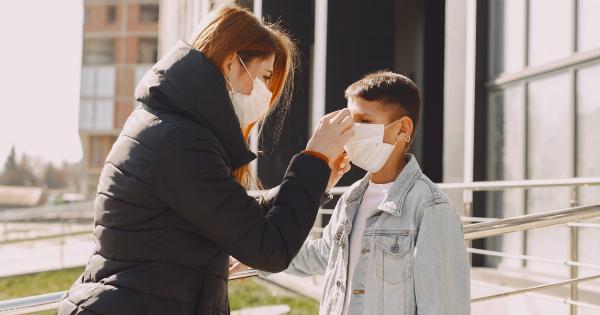The Fifth Disease, also known as Erythema Infectiosum, is a mild childhood viral illness that presents with symptoms such as a rash, low-grade fever, and flu-like symptoms. It is caused by the Human Parvovirus B19.
Although it is a relatively harmless condition, it can cause complications during pregnancy, particularly during the first trimester, and could lead to miscarriage or fetal anemia.
How does the Fifth Disease spread?
The Fifth Disease is highly contagious and spreads through respiratory secretions, like mucous and saliva.
The incubation period is usually between 4-28 days, and children who are infected with the virus can spread it to others even if they don’t have any symptoms.
What are the symptoms of the Fifth Disease?
Not all children who get infected with the Human Parvovirus B19 will develop symptoms, and for those that do, symptoms will usually appear 4-14 days after exposure. Common symptoms of the Fifth Disease include:.
- Low-grade fever
- Headache
- Sore throat
- Runny nose
- Fatigue
- Joint pain and stiffness
- A rash on the face, trunk, and limbs. The rash usually begins as red, raised, lace-like patches that later turn into a lacy appearance. It usually doesn’t itch and might disappear and reappear over several weeks.
How is the Fifth Disease diagnosed?
In most cases, the Fifth Disease doesn’t need any medical intervention and can resolve on its own after several weeks.
However, if your child is experiencing symptoms that you think are related to the Fifth Disease, it’s always best to contact your healthcare provider. There is a blood test that can be used to diagnose the virus, but it is usually not necessary since the symptoms and appearance of the rash are sufficient to identify it.
How is the Fifth Disease treated?
As mentioned earlier, the majority of children infected with the Fifth Disease will not require any medical intervention.
The recommendation, in this case, is rest, hydration, and over-the-counter medication like acetaminophen or ibuprofen to alleviate the fever and other discomforts. As with any viral illness, antibiotics are not effective, and anti-viral medication is not available. In rare cases where a child’s immune system is compromised, hospitalization might be necessary.
Can the Fifth Disease be prevented?
As with most contagious illnesses, the key to prevention is good hygiene. Frequent hand washing, covering your mouth when coughing or sneezing, and avoiding contact with people who are sick are all effective preventive measures.
In the case of the Fifth Disease, once a rash has appeared, it’s unlikely that a child will be contagious and most likely immune to future infections.
What are the risks of the Fifth Disease during pregnancy?
While the Fifth Disease is usually a mild illness in children, it can have serious consequences for pregnant women. If a woman contracts the virus during the first trimester, it could cause a miscarriage or severe fetal anemia.
In the second and third trimesters, it could lead to problems with red blood cells and other complications. If you are pregnant and think you might have been exposed to the virus, it’s important to contact your healthcare provider as soon as possible.
When is it safe to send a child with the Fifth Disease back to school?
As previously mentioned, a child with the Fifth Disease is most contagious before the appearance of a rash.
By the time the rash appears, the child is at the end of the contagious period, and most schools and daycares will allow the child to return to school. However, it’s essential to check with your child’s school or daycare to ensure their policy aligns with this.
Conclusion
The Fifth Disease, while a contagious viral illness in children, is usually a mild illness that requires no medical intervention. However, pregnant women should be cautious, as the virus could have severe consequences for their unborn babies.
As always, good hygiene practices and seeking medical advice when necessary are critical in managing the Fifth Disease.




























